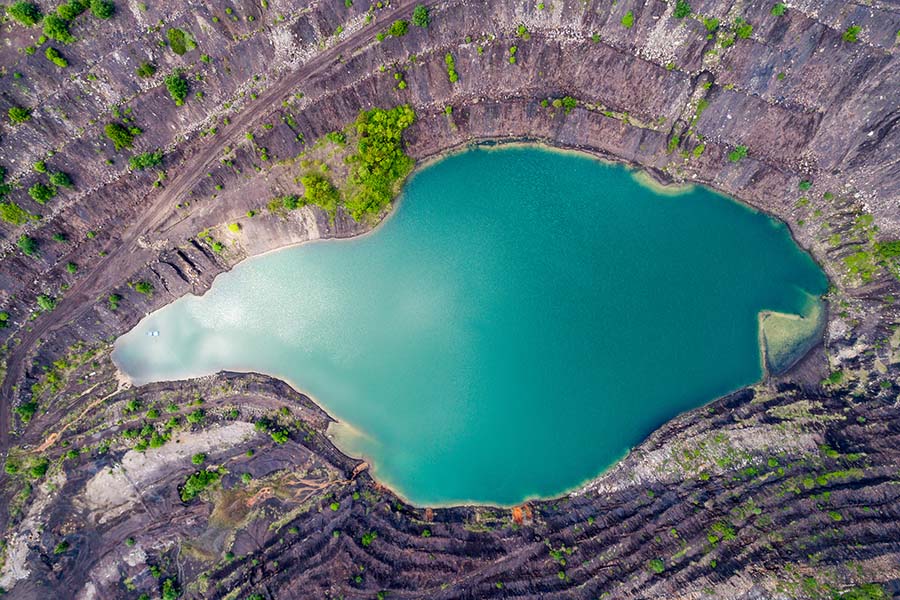Article Center
Containment Methods for Wastewater and Runoff
Containment for wastewater, especially hazardous materials, goes beyond just holding it in a simple tank or lined pond.
Which Industries Produce the Most Wastewater?
Wastewater is generated by dozens of different industries on a daily basis.
The Various Risks of Wastewater
While wastewater is often a valuable source of moisture for irrigation or other purposes, it also poses a wide range of hazards.
Maintenance Requirements for Floating Covers
The marketing materials of alternative cover options like floating ballasts may convince you that geomembrane floating covers require a lot of maintenance.
Material Options Available for Floating Pond Covers
Approving the use of a floating cover made from geomembrane for your project isn’t the only step in design or selection.
Ponds with Floating Covers vs Concrete Vaults and Solid Tanks
If digging and lining a pond sounds like a lot of work, it’s also possible to choose pre-formed vaults and tanks to hold fresh water or waste products.
Solid Geomembrane Floating Covers vs Ballast Balls and Plates
The majority of covered ponds and lagoons in use today are covered with a system known as the defined sump/tensioned plate design.
What Other Equipment is Needed for a Geomembrane Floating Cover?
Geomembranes certainly work well as floating covers, especially when built with the right materials from the start.
Clean vs Wastewater Cover Requirements
While there are dozens of potential, unique uses for floating covers made from geomembranes like RPE, most of them can be easily sorted into the categories of fresh and wastewater storage.
Where are Floating Covers Needed the Most?
With such a wide range of uses and potential benefits, it’s not surprising that floating covers are installed on ponds and tanks in dozens of different industries.
All About Floating Covers
Floating covers for reservoirs and lagoons are often compared to the simple solar or winter covers used on backyard pools.
Protecting Penetrations Through Mining Geomembranes
Between drains, pumps, plumbing and maintenance ports, mining ponds often feature multiple penetrations through the sides and bottom of the geomembrane liner.
Raincoat Liners for Mining Heaps
In addition to protecting the ground from seepage with buried liners, mining facilities need to consider stopping rain from infiltrating heaps of raw material.
Geomembranes for Mining Evaporation Ponds
Evaporation ponds are widely used throughout the various branches of the mining industry.
Installation Challenges for Mining Geomembranes
While geomembranes are practically required by many of today’s modern mining projects, they’re not without installation considerations.
Which Geomembrane Materials Work Best for Mining Applications?
With so many uses for geomembranes in the mining industry, during both active and closed stages of a project, it’s no wonder they’re so widely used.
How Geomembranes Play Important Roles in Mine Reclamation
It’s not enough to simply specify certain mining geomembranes during the original construction of a mine.
Mining Uses for Geomembranes
In addition to being universally popular for road construction and pond lining projects alike, geomembranes are essential for the mining industry.
What are Geomembranes?
You’ll find dozens of mentions of geomembranes in the recommendations and standards for mining facilities in most states, but the exact definition of this term isn’t always clear.
The Importance of Sludge Removal and Management in Lagoons
One of the biggest benefits of using quality, flexible geomembrane liners in sewage lagoons is the improvements to the sludge removal process.
Signs of Trouble with a Sewage Lagoon
A sewage lagoon may look like it’s operating the same as it always has while water is secretly leaking out of a low quality, cracked liner.
Anaerobic, Aerobic, and Aerated Lagoons
All sewage lagoons rely on some kind of bacteria to break down waste.
What Liners Work Best for Sewage Lagoons?
It’s vitally important to never settle for any random pond liner for a sewage lagoon.
Processing and Polishing Lagoons for Wastewater
In addition to storage lagoons only designed to hold waste for pumping, most sewage ponds fall into either the processing or polishing category of treatment.


























